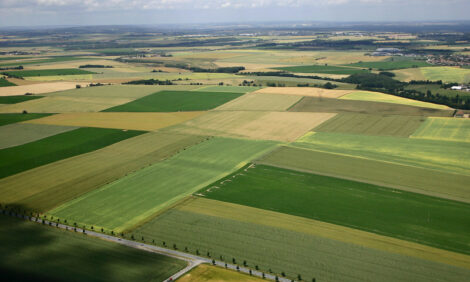



Rising corn costs: Volatile cattle market
US - The increasing use of rowcrops, particularly corn and feed grains, to produce ethanol or other alternative fuels is pushing livestock feed costs up.There's no rolling back the clock. Alternative fuels development is a freight train the livestock industry isn't going to stop, said Cevin Jones, of InterMountain Beef, regional vice president of the National Cattlemens Beef Association.
It also has consequences. Jones expects a very volatile year in the cattle market.
"Long-term, consumers can expect to pay higher prices at the meat counter. Short-term, it's already affecting my bottom line. My feed costs are up 30 percent now, and I anticipate they'll rise another 10 percent this summer," Jones said. "The cow-calf producer will wind up receiving less for his cattle. I have two basic input costs, one for the animals I buy and the other for feed. An increase in one has to be counterbalanced by a decrease in what I can pay for the other.
"That's the cold, hard, economic truth," he said.
One possible offset may be an increase in corn and wheat acreage this year. Jones has seen private estimates projecting 10 million to 12 million more acres in 2007. Some of it will be planted on ground coming out of Conservation Reserve Program contracts.
"That's a big unknown right now. USDA estimates won't be out for several more weeks," he said.
Jones was among some 600 attendees at the 7th Harvesting Clean Energy Conference in Boise Jan. 28-30. About half those in attendance were farmers and ranchers, most eager to hear about the opportunities to add value to their crops or crop residues by converting them to alternative energy such as ethanol, biodiesel or other products.
He attended only the first day of the Boise meeting. He flew to Nashville, Tenn., for the National Cattlemens Beef Association convention Jan. 31-Feb. 3.
"I expect corn and feed prices will be a major topic there," he said.
The Boise conference was opened by J. Read Smith, the Washington state farmer and rancher who is heading up 25X25 - the movement to replace at least 25 percent of the fossil fuel consumed by the United States with alternative energy sources by 2025.
"It's painfully obvious the world's oil supply comes mainly from one of the most volatile parts of the world. We're probably not on the Christmas card list of the people who have it. There are lots of folks out there who would love to harm our economy," Smith said.
Smith is aware that the drive to develop alternative energy sources is not being received well in the livestock industry.
Source: Capital Press


